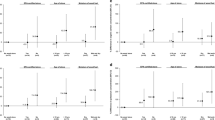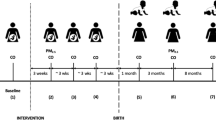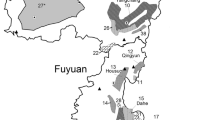Abstract
Continuous particles less than 2.5 μm in diameter (PM2.5) and carbon monoxide (CO) were monitored during breakfast, lunch, and dinner in three high-density and four low-density villages near Quetzaltenango, Guatemala to help assess the viability of this region for a proposed respiratory health and stove intervention study. Approximately 15 homes were visited during each mealtime in each of the seven villages; in all, 98 homes were visited, with a sampling duration of 2–3 min per home per meal. For each village, a line (transect) was drawn on a village map along existing roads from one end of the village to the other; homes and between-home outside locations along the transect were monitored. Although the predominant stove type was the open fire, several other stoves, in various levels of disrepair, were observed frequently. The highest indoor concentrations of PM2.5 were observed in homes using the open fire (avg.=5.31 mg/m3; SD=4.75 mg/m3) or equivalent, although homes using the plancha — indigenous wood-burning stove with chimney — also had measurements >13.8 mg/m3, PM2.5 limit of detection. The highest indoor concentrations of CO were also observed in homes using the open fire (avg.=22.9 ppm; SD=28.1 ppm), with a maximum measurement of >250 ppm. For both PM2.5 and CO, levels measured in homes with plancha, lorena, or open fire were significantly higher than levels taken in the street or in homes using a gas stove. The Spearman correlation coefficient between PM2.5 and CO for all data combined was 0.81, and ranged from 0.30 for the lorena to 0.68 for the plancha in homes using wood-fueled stoves. Although indoor PM2.5 and CO levels were not significantly different between high- and low-density villages, street-level PM2.5 (p=0.002) and CO (p=0.002), were significantly higher in the high-density villages. These data provide a useful picture of the pollution levels coming from a range of cooking stoves in various levels of disrepair, as well as a representation of how outdoor particle mass and CO levels vary from high- versus low -density villages.
This is a preview of subscription content, access via your institution
Access options
Subscribe to this journal
Receive 6 print issues and online access
$259.00 per year
only $43.17 per issue
Buy this article
- Purchase on Springer Link
- Instant access to full article PDF
Prices may be subject to local taxes which are calculated during checkout
Similar content being viewed by others
Author information
Authors and Affiliations
Corresponding author
Additional information
This work was supported by funding from the International Development Research Center (IDRC), Ottawa, Canada and the World Health Organization, Division of Diarrhoeal and Acute Respiratory Disease Control, Geneva, Switzerland.
Rights and permissions
About this article
Cite this article
NAEHER, L., SMITH, K., LEADERER, B. et al. Indoor and outdoor PM2.5 and CO in high- and low-density Guatemalan villages. J Expo Sci Environ Epidemiol 10, 544–551 (2000). https://doi.org/10.1038/sj.jea.7500113
Received:
Accepted:
Published:
Issue Date:
DOI: https://doi.org/10.1038/sj.jea.7500113
Keywords
This article is cited by
-
Crosscutting of the pollutants and building ventilation systems: a literature review
Environmental Science and Pollution Research (2023)
-
Indoor Air Pollution in Indian Rural Kitchen: A Case Study
MAPAN (2021)
-
Residential wood stove use and indoor exposure to PM2.5 and its components in Northern New England
Journal of Exposure Science & Environmental Epidemiology (2020)
-
Exposure contrasts associated with a liquefied petroleum gas (LPG) intervention at potential field sites for the multi-country household air pollution intervention network (HAPIN) trial in India: results from pilot phase activities in rural Tamil Nadu
BMC Public Health (2020)
-
A cross-sectional study of determinants of indoor environmental exposures in households with and without chronic exposure to biomass fuel smoke
Environmental Health (2014)



